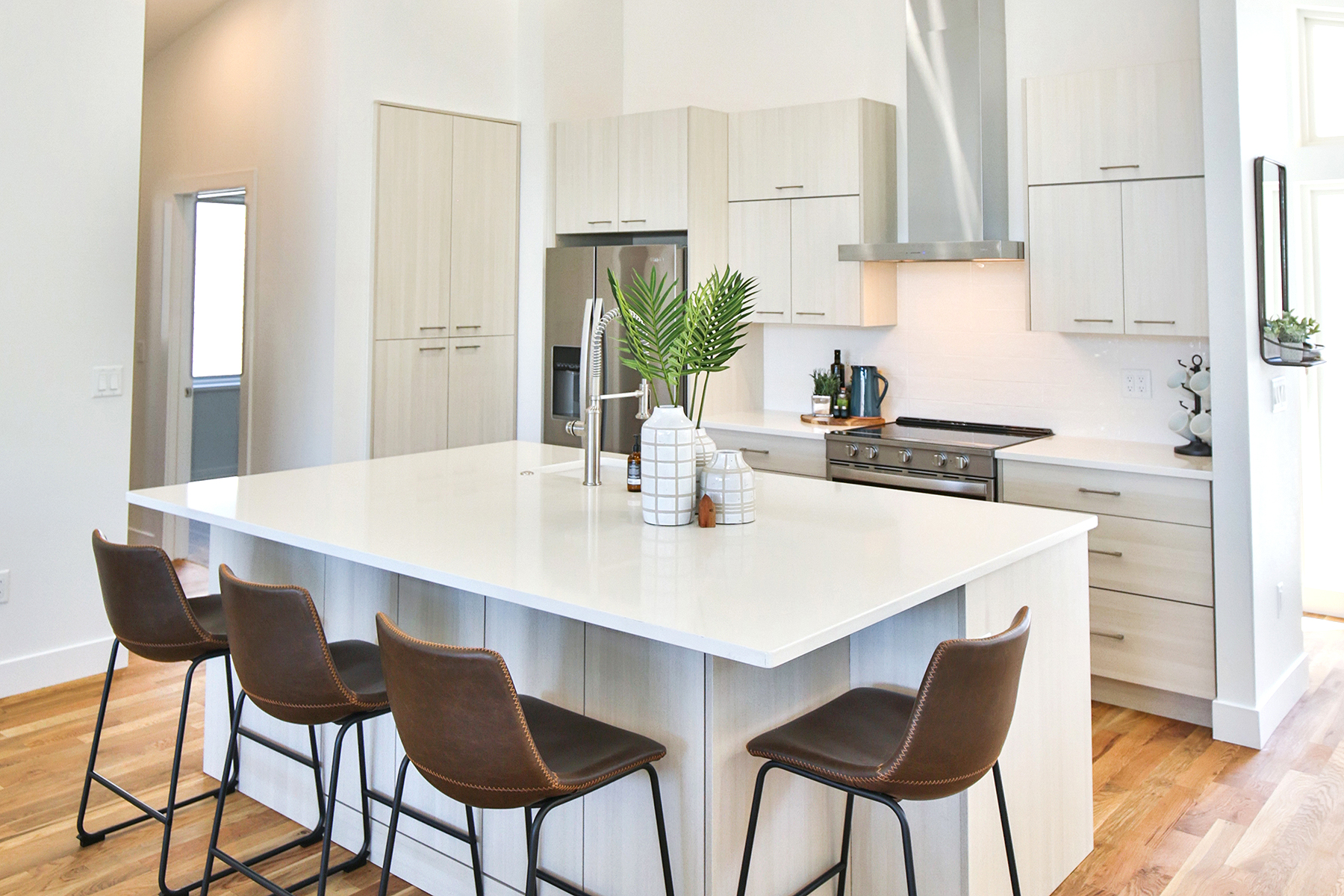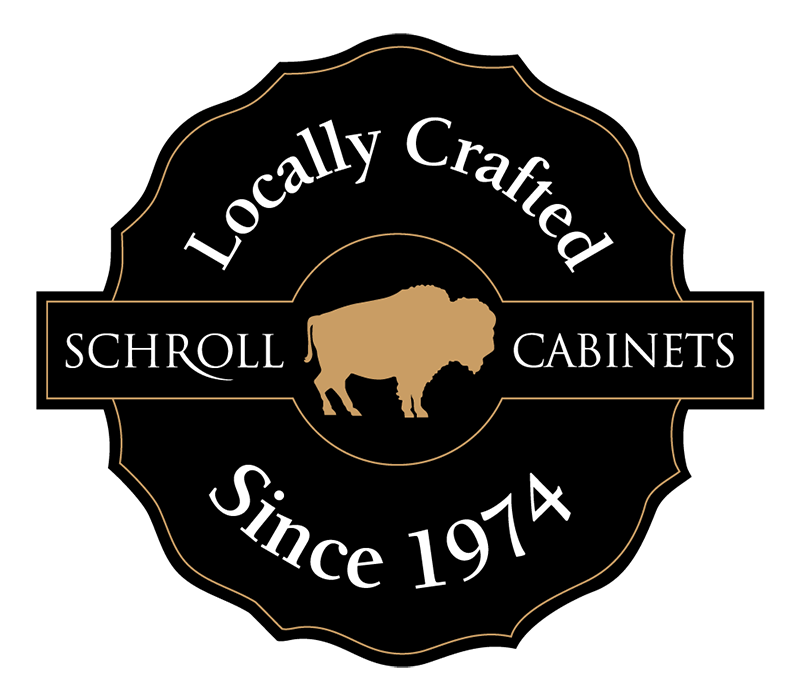
Why Choose Not Wood?
BY CARLA RIEDEL
Why Choose Not Wood?
When we think of fine cabinetry, we naturally conjure up images of cherry Duncan Phyfe pedestal dining tables or Lord Grantham’s Downton Abbey oak-lined library. And most of us recognize the term ‘fine cabinetry’ embraces more than just traditional style. After all, an Alvar Aalto bar cart from the 40’s is both modern and undeniably fine.
We don’t immediately think of fine cabinetry as something made of engineered material and, surprisingly, we are immediately wrong. Acrylics and melamines, when well-crafted and smartly designed as kitchen cabinetry, can be as fine as fine can be.

Acrylic Options
As with all cabinetry, the quality of acrylic doors can run the gamut from exquisite to fine to downright just terrible. Most of us have only seen terrible examples. Poor quality acrylic material scratches easily, appears cloudy, and will probably de-laminate from its substrate over time. Edge banding is a tough thing to do properly – poorly banded edges expose a noticeable thickness of the face material and contribute to a general feeling of not wonderful-ness.
Properly banded acrylic edges, however, are a lovely sight to behold. The best look as though they are not banded at all, in spite of the fact that a sturdy substrate of MDF is essential to the stability of doors and drawer fronts. My favorite acrylic doors have the slightest teensy bevel at the edge which provides the illusion that the glossy door might be made of glass.
If you love the chic sophistication of acrylic material but are not a fan of glossy surfaces, matte acrylic doors may be just the thing for you. Matte finishes are rapidly gaining popularity in all areas of kitchen design including backsplashes, countertops, and flooring. While still undeniability contemporary, matte acrylic doors have a satiny, lustrous finish that softens the stark lines of a rigidly modern design. Matte doors are a smart way to add texture to a kitchen design without sacrificing your desire for a stylish leading-edge décor.
Textured Melamine
Textured doors are made of an MDF substrate with an irregular (rather than smooth) melamine surface. Textured melamine comes in a myriad of patterns to replicate exotic woods such as teak, canella, or rustic elm. A melamine door is almost always slab rather than a raised or flat panel set inside a frame, which lends itself well to contemporary or mid-century design. They can less expensive than natural wood or acrylic and are a practical option for laundry and craft/sewing rooms. But they shouldn’t be relegated to less-than-public rooms simply because their price point is manageable. Textured melamine has a simplicity and refinement of its own. When coupled with sleek appliances and cool natural stone, it can be positively swanky.
Talk to your designer at length regarding your expectations for a cabinet finish. If you’re looking for color without the variations inherent in painted wood, an engineered (aka man-made) material may be just the ticket. With a wide selection of colors and options from glossy to matte to textured to choose from, you’re sure to find the right alternative for you.

CHEYENNE, WY • 307.632.4278
FORT COLLINS, CO • 970.266.2717
LITTLETON, CO • 303.237.5469
COLORADO SPRINGS, CO • 719.471.4008

All are welcome at Schroll Cabinets, in all of our locations, without exception.
© Schroll Cabinets. All Rights Reserved.

